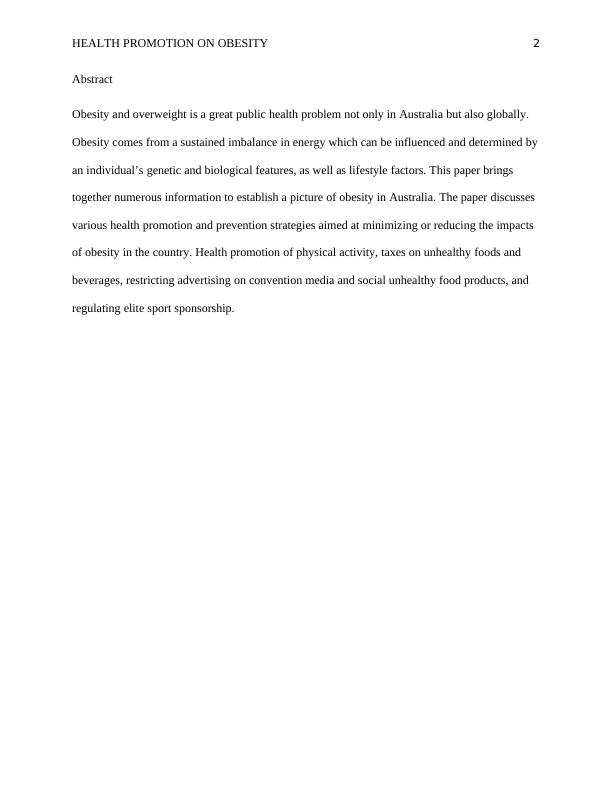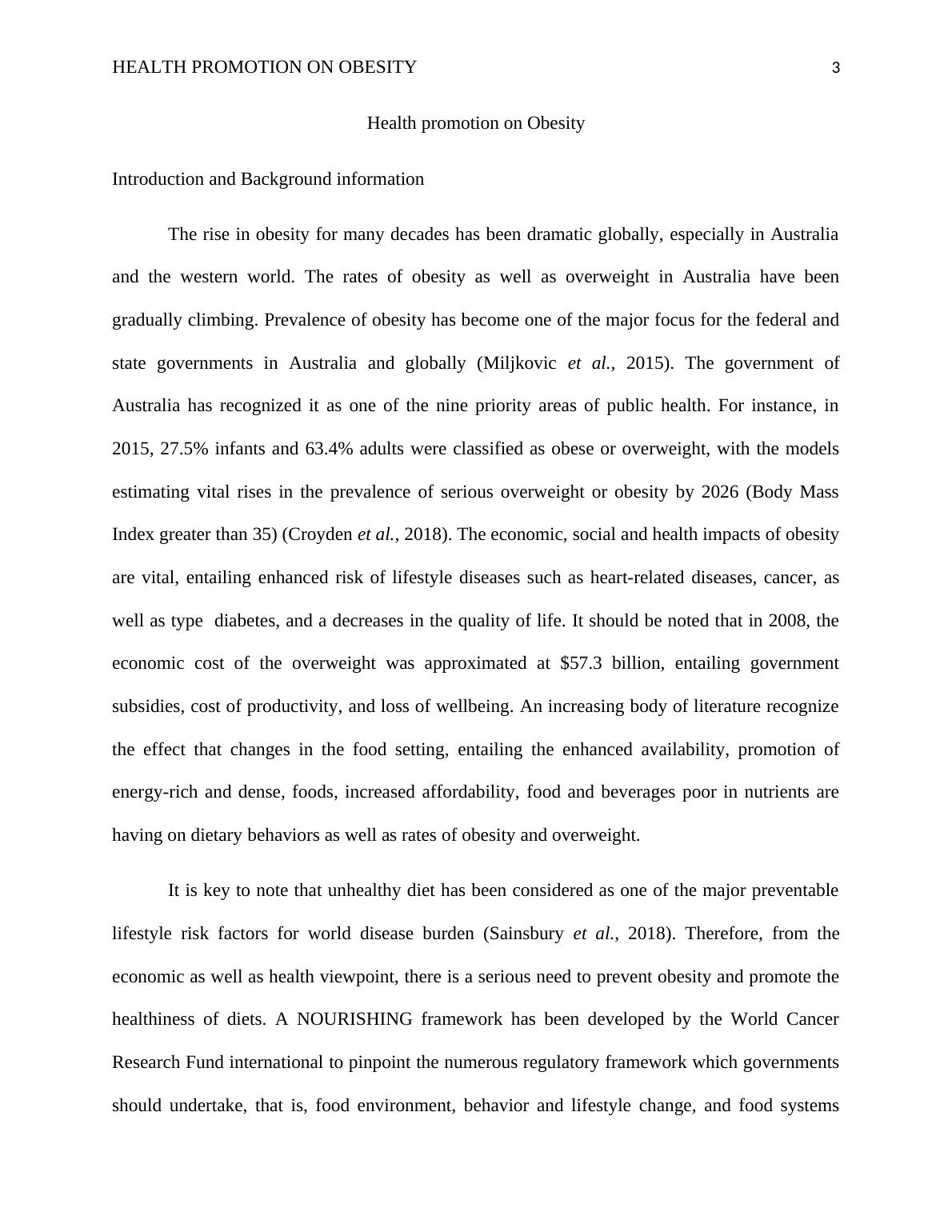Health Promotion on Obesity Research Paper 2022
Compare and contrast interventions that have been implemented to produce individual behaviour change with interventions focussed on population level change for a chosen health promotion issue. Conclude which interventions were most effective and why.
13 Pages3010 Words38 Views
Added on 2022-09-28
Health Promotion on Obesity Research Paper 2022
Compare and contrast interventions that have been implemented to produce individual behaviour change with interventions focussed on population level change for a chosen health promotion issue. Conclude which interventions were most effective and why.
Added on 2022-09-28
ShareRelated Documents
End of preview
Want to access all the pages? Upload your documents or become a member.
Probable Consequences of Incorporating Sugar Tax in Australia
|12
|2920
|78
Systems Thinking In Public Health
|8
|1733
|195
Health Promotion: Awareness against Obesity
|16
|3274
|476
Nutrition Promotion Program for High School Students
|13
|2832
|418
Childhood obesity - Assignment PDF
|13
|3628
|39
Obesity: A Global Public Health Issue
|11
|807
|153




